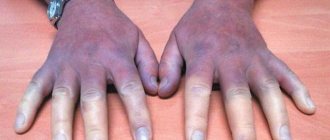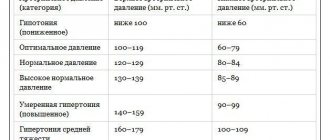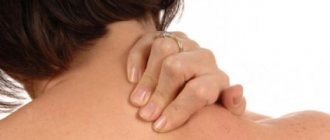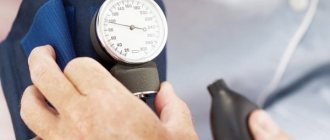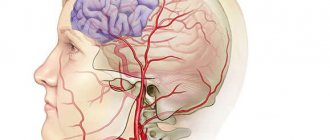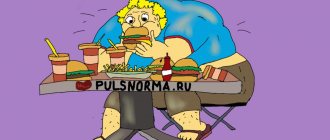The most common diagnosis nowadays is vegetative vascular dystonia. The disease is a range of symptoms that occur when there are disturbances associated with the normal functioning of the cardiovascular system. At the same time, a serious disturbance occurs in the autonomic nervous system, which serves in the body to regulate vascular tone and heart rate, and it cannot normally cope with the changes that have occurred. Frequent dizziness and fainting with vegetative-vascular dystonia frighten a person and cause nervousness, preventing them from living a normal, fulfilling life.
What happens in the body during the progression of vegetative-vascular dystonia
With the development of VSD, a disorder of nerve communications occurs between the brain and body systems: gastrointestinal, hormonal, urinary and reproductive, vascular, and nervous.
These disorders contribute to fainting during VSD and have the following manifestations:
- increased irritability;
- dizziness;
- increased heart rate;
- pain in the heart area;
- respiratory rhythm intensity;
- feeling of lack of air;
- vomit;
- disorders of the bladder emptying process;
- sexual dysfunctions;
- jumps in body temperature;
- surges in blood pressure.
Differences between fainting and VSD
Here are a few signs by which you can distinguish fainting with VSD:
- Loss of consciousness is always short-lived, from a few seconds to a minute and a half.
- Before fainting, a pre-fainting state occurs - a feeling of weakness, darkening in the eyes, a “tingling” sensation on the skin, numbness of the fingers, nausea, increased sweating, especially on the face and palms.
- The presence of characteristic conditions for the occurrence of fainting: being in a stuffy room, a sudden change in body position (this could be, for example, a sharp rise from a lying position to a vertical one), severe emotional experience, fear)
Those who have experienced fainting in the past can take a number of steps to protect themselves from injury or other consequences of loss of consciousness.
Important! If you feel signs of fainting or severe weakness, sit down if possible and ask others for help. Especially while driving a car. You must immediately pull over to the side of the road, open the windows, turn on your hazard lights and, if possible, report your condition.
Fainting can be a manifestation of serious diseases of the brain, heart and blood vessels. If this symptom appears, especially repeated fainting, it is imperative to consult a therapist and neurologist. To exclude organic pathologies, an electrocardiogram (ECG), blood pressure monitoring, cardiac ultrasound, general blood test, and blood glucose must be performed. Additionally, the following may be prescribed: MRI of the brain, Dopplerography of the carotid arteries, ultrasound of the thyroid gland, laboratory tests of thyroid hormones, sex hormones, pituitary hormones, electroencephalogram (EEG), rheoencephalography.
How dangerous are fainting?
If a person loses consciousness for the first time, even for a few seconds, he needs to visit a specialist. This may be a sign of severe pathologies. Sometimes they do not make themselves felt for a long time, manifesting themselves only as fainting.
When a patient is diagnosed with vegetative-vascular dysfunction, usually no other serious pathologies are detected. However, this does not mean that the disease does not need treatment.
A constant feeling of anxiety, disruption of normal blood circulation, and surges in blood pressure lead to dangerous pathologies of the heart and blood vessels, which can cause a person to have a heart attack or stroke.
Help for fainting
If a person has already lost consciousness, his loved ones need to take the following measures:
- lay the patient on the bed, raise his legs so that they are above the level of his head;
- open the window to let fresh air into the room;
- lightly pat the patient on the cheeks, sprinkle cold water on the face;
- let him smell ammonia (or a piece of cotton wool soaked in vinegar).
When a person regains consciousness, you should not immediately allow him to get up - he should lie down for several minutes. Then you can sit down, leaning your back on something. As a rule, after fainting, a person feels severe weakness, dry mouth, and weakness. The patient may also experience profuse sweating.
Causes of fainting
When vascular tone is disturbed, hypoxia develops, that is, starvation of the brain. The sudden outflow of blood causes a drop in pressure. This is how fainting develops with VSD. When the outflow of venous blood decreases, syncope occurs during the transition from a horizontal position.
An attack occurs for the following reasons: emotional excitement, a sense of danger, stuffiness, drinking alcohol, change of weather, fatigue, intense physical activity.
Why does fainting occur?
Loss of consciousness associated with disruption of the adequate functioning of the autonomic nervous and vascular systems is a common symptom of dystonia.
A sudden change in body position causes disruption of blood circulation in the vessels of the brain. There is a short-term oxygen deficiency and loss of consciousness. Deterioration in well-being is provoked by:
- staying inside an unventilated room;
- severe stress;
- fear.
Fainting with vegetative-vascular dystonia is safe for life, but falling is associated with the risk of injury.
Paroxysms are characteristic of the hypotonic type of the disease. It is with it that a sharp decrease in blood pressure often occurs, causing fainting. Less commonly, a similar condition occurs with a mixed form of vascular dystonia in people suffering from the cardiac, hypertensive variant.
Presyncope and immediate loss of consciousness appear following the precursors - a complex of predominantly similar symptoms:
- sudden deterioration in health;
- severe weakness;
- the appearance of a dark veil in the eyes;
- tinnitus;
- heavy sweating;
- numbness of hands, feet;
- nausea.
Paroxysm occurs a few minutes after the listed unpleasant sensations and soon passes without consequences.
What is presyncope?
The appearance of fainting with vegetative-vascular dystonia is never sudden. It is preceded by a complex of symptoms. If these signs develop, measures must be taken quickly to prevent further development of syncope.
A pre-fainting state with VSD is characterized by the following symptoms: the appearance of cold sweat, a disorder in the coordination of movements, severe nausea, tremor of the fingers, darkness in the field of vision when standing up, obvious weakness, a sharp feeling of panic, impaired sensitivity of the limbs, fear of premature death, sudden paleness of the skin, severe fear, ringing sensations in the ears.
What distinguishes such conditions in patients with VSD?
It should be noted that fainting is a characteristic symptom of the hypotonic variant of vegetative-vascular dystonia. After all, it is precisely this option that is most characterized by a decrease in blood pressure, which underlies the development of paroxysm.
Less commonly, fainting conditions develop with a mixed version of VSD. And extremely rarely, vegetative-vascular paroxysms develop in patients suffering from hypertensive or cardiac variants.
Fainting with vegetative-vascular dystonia always has so-called “precursors”. These are symptoms that occur immediately before the paroxysm. These symptoms are usually the same. This leads to the fact that patients remember these “harbingers” and can anticipate the development of a fainting state. The most common warning signs of fainting are:
- a sharp deterioration in general health, severe weakness;
- blurred vision and/or flashing spots before the eyes;
- noise in ears;
- nausea;
- clouding of consciousness;
- the appearance of cold sticky sweat;
- feeling of numbness in the extremities (arms and/or legs).
After 1–2 minutes (in rare cases, a little longer) from the moment the “precursors” appear, the vegetative-vascular paroxysm itself occurs. Fainting with vegetative-vascular dystonia, as a rule, is short-lived.
The patient may lose consciousness for a short period of time - from 2 seconds to 1.5 minutes. Moreover, more often than not, consciousness is absent for only seconds. A more prolonged loss of consciousness should suggest another reason for the development of paroxysm.
Is it possible to prevent an attack?
Because fainting does not develop suddenly, a person may feel an attack coming on. In this way, further development of presyncope can be prevented. To do this, a person needs to take measures to dilate blood vessels. To prevent the development of exacerbation of VSD with syncope, it is necessary:
- lower your head as low as possible - in this case, blood will begin to flow to it;
- take a sitting position;
- sniff any substance with a strong odor (ammonia is ideal);
- normalize rapid breathing;
- try to do simple intellectual work - perform arithmetic operations in your head, count objects, etc.
An attack can be controlled with medication. The following medications will help stop it:
- Validol: taken sublingually, that is, the tablet must be placed under the tongue;
- Anaprilin: it should be taken when the heart rate increases;
- Relanium: taken for severe nervous excitement.
What to do if you are about to faint?
If you feel that a loss of consciousness is about to occur, you must first of all find any stable object nearby and lean on it. Next, you need to tense your muscles as much as possible and focus on breathing.
You should breathe with your stomach, inhalations and exhalations should be long and deep. You can breathe into a paper bag. When the condition begins to return to normal, there is no need to immediately get up and make sudden movements. You need to be in a calm state for a few minutes, then you can drink a glass of water or a cup of warm, sweet tea.
VSD sufferers who often faint are advised to always have ammonia or a piece of fresh ginger with them.
Features of first aid
Fainting with vegetative-vascular dystonia requires emergency first aid. The following actions should be taken:
- provide air flow by opening the window;
- place the person in a horizontal position;
- lift his legs;
- in order to normalize breathing, you need to loosen your clothes;
- spray with water;
- place warmth on your feet;
- let the ammonia solution inhale;
- give a sweet drink after the person wakes up.
These measures will help prevent further progression of syncope in a person.
An active life is the best help
Strong physical activity, sports, and a healthy lifestyle during VSD will help cope with paroxysms.
The choice of which type to give preference should take into account the characteristics of the ailment:
- Swimming, rowing, and light jogging help a lot.
- Less intense ones include water aerobics, cycling (using an exercise bike), and race walking.
- Oriental sports that promote relaxation, proper breathing, and also have a positive effect on consciousness - yoga, wushu - are of great benefit.
Even when visiting the gym, we must not forget about daily walks in the fresh air. It is enough to just walk for 2-3 hours, admiring the beauty of the park and forest, to saturate the body with oxygen and at the same time improve your mental state.
Walk in any weather. Dank autumn, frosty winter, hot summer will help restore adaptive capabilities.
People who have gotten rid of the problem advise purchasing a fitness ball. Exercising on it helps relax the muscles. They are especially useful for the spine - it is gently stretched, spasms are relieved, and blocked nerve roots are released. Exercises on a fitness ball are simple:
- Lie on it with your back bent. With your feet on the floor, roll.
- Lie on top of the ball with your stomach. Relax and bend your back strongly.
Pay sufficient attention to mental stress, especially if your work activity involves primarily physical work. Intellectual games, learning new foreign languages, even simple crossword puzzles bring pleasure and benefit.
However, getting too carried away is also dangerous. Overwork (physical, mental) threatens to worsen the disease. Therefore, working on papers for a long time, at the computer, or watching TV shows late is prohibited.
distonija.ru
Vegetative-vascular dystonia is the most common diagnosis in outpatient medical records. Medical research confirms that VSD is detected in almost 30% of cases of primary diseases of a non-infectious nature among the adult population under 40 years of age.
VSD is a set of symptoms that appear when the functioning of the cardiovascular system is disrupted. In some cases, the autonomic nervous system, which controls the body’s mechanisms for regulating vascular tone and heart rate, malfunctions. And the vegetative-vascular component of regulation cannot adequately respond to sudden changes in the body. At the same time, there are no organic changes in the organs (the examination does not reveal the presence of lipid “plaques” in the vessels, persistent narrowing or expansion of the lumen of arteries and veins, and there are no changes in the heart valves).
Treatment
In case of severe fainting due to vegetative-vascular dystonia, it is necessary to consult a therapist, psychotherapist, or neurologist. They will select effective treatment for frequent syncope. After the diagnosis is established, sedatives, adaptogens, and dietary supplements are prescribed. Physical therapy, aromatherapy, massage, and therapeutic diet are indicated .
For low blood pressure, Eleutherococcus and ginseng preparations are recommended. These drops regulate vascular tone and increase blood flow to the brain. The use of other drugs is inappropriate, and in some cases even dangerous, because it can contribute to the development of dangerous situations - a sharp jump in blood pressure, collapse, acute cerebrovascular accident.
Therapeutic massage is performed only in the absence of contraindications. You cannot do it yourself, because the person’s condition may worsen sharply. The same applies to aromatherapy: the doctor prescribes essential oils based on the general condition of the body and the presence of concomitant pathologies.
Therapeutic nutrition for vegetative-vascular dystonia consists of excluding spicy, fried, overly salty and smoked foods. You should eat more vitamin foods and seafood. Vegetable fats are also useful for dystonia: they contain many polyunsaturated essential fatty acids.
How to avoid their development?
Fainting can be prevented. Sports play an important role in this. You should choose the type of physical activity that you tolerate well. With vegetative-vascular dystonia, swimming, race walking, cycling, aerobics, and yoga have a pronounced positive effect.
Regular physical activity will keep the body in good shape and gradually normalize the autonomic part of nervous regulation.
Regular walks in the fresh air are very important. It is optimal to spend 3-4 hours a day in the fresh air. In this case, of course, the weather conditions should be taken into account. Wear a hat in the summer, dress warmly in the winter, and so on.
But every patient with VSD, who has a tendency to develop fainting conditions, must go outside every day, take oxygen and sun baths, the value of which is well known.
With vegetative-vascular dystonia, mental stress is also important. If your daily work activity does not imply the need for active intellectual work, then you should devote separate time to this type of activity.
Learning a new language, intellectual games, solving mathematical problems - it is important to force the central nervous system to work actively, because it is the center that regulates the periphery. But in cases where the main work involves the need for active brain activity, it is important to protect yourself from mental fatigue.
To GET RID of vegetative-vascular dystonia, Elena Malysheva recommends a new method based on the Monastic collection of Father George.
It contains 16 useful medicinal plants that are extremely effective in the treatment and prevention of VSD, arrhythmia, hypertension, migraines and many other diseases. Only natural ingredients are used, no chemicals or hormones!
Read about Malysheva’s technique...
In your free time, you should give preference to active recreation.
If you experience fainting, be sure to tell your doctor about it. In this case, he will probably adjust the treatment tactics in your regard and prescribe a course of vitamins or vitamin-mineral complexes.
You may also be offered herbal medicine, aromatherapy, acupuncture and a number of other non-traditional techniques. Do not be afraid of non-standard treatment methods. Listen to the recommendations of your doctor and try to follow them as accurately as possible. This will guarantee that after some time you will be able to get rid of the manifestations of vegetative-vascular dystonia, including fainting.
Be sure to ask your doctor about the possibility of spa treatment. Annual wellness is beneficial for every patient with VSD.
By improving your health once, you will prevent the development of exacerbations for the year ahead. And each subsequent recovery will contribute to greater improvement of the body and permanent elimination of the symptoms of vegetative-vascular dystonia.
Fainting is a rather unpleasant episode that many patients with VSD experience. But don't despair.
Exercising, walking in the fresh air, following the recommendations of your doctor - all this will allow you to control the pathology and avoid unpleasant complications.
Do you still think that it is impossible to get rid of VSD forever!?
- Do you often experience discomfort in the head area (pain, dizziness)?
- Do you feel chronic fatigue, drowsiness...
- I constantly feel high blood pressure...
- There is nothing to say about shortness of breath after the slightest physical exertion...
- And you have been taking a bunch of medications for a long time, going on a diet and watching your weight...
But judging by the fact that you are reading these lines, victory with the VSD is not on your side. That is why we recommend that you familiarize yourself with the new technique of E. Malysheva, who has found an effective remedy in the treatment of vegetative-vascular dystonia.
Did you like the article?
Let us know about it -
rate
Comments:
Better read what famous Russian doctors say about this. For several years I suffered from VSD - fluctuating blood pressure, bursting pain in the head, dizziness, insomnia, rapid heartbeat, weakness, depression. Endless tests, visits to doctors, and pills did not solve my problems. BUT thanks to a simple recipe, migraines, palpitations and blood pressure problems are all in the past, I am absolutely HEALTHY!!! Now my attending physician is surprised how this is so. Here is a link to the article.
DlyaSerdca.ru
Paroxysm and presyncope in vegetative-vascular dystonia are provoked by surges in blood pressure. Having learned to recognize the approach of an attack, you will be able to neutralize it without harm to your health.
Preventing fainting
There are recommendations that can prevent fainting during VSD. People suffering from dystonia of the autonomic nervous system are advised to:
- quit smoking;
- get quality sleep at night, alternate between rest and work correctly;
- eliminate the consumption of alcoholic beverages or reduce them to a minimum;
- alternate physical and mental work;
- visit the pool;
- take regular walks;
- to harden;
- sunbathe within reasonable limits;
- eat foods enriched with microelements;
- periodically solve crossword puzzles and simple mathematical problems.
Syncope with vegetative-vascular dysfunction cannot be ignored. When the symptoms of an attack approach, a person needs first aid. A balanced diet, giving up bad habits, regulating sleep and rest patterns, and moderate physical activity will help avoid recurring attacks of vegetative-vascular dystonia and will allow you to maintain high performance and positive emotions.
Treatment and preventive measures
A comprehensive examination and consultation with a neurologist or psychotherapist will help rule out the presence of a more serious pathology. For dystonia, medications are prescribed for:
- improving blood circulation;
- normalization of cerebral vascular tone (nootropics);
- sedatives.
How strong they will be depends on the severity of the pathology (sometimes sedative tablets or plant-based drops are enough). Natural stimulants - tincture of ginseng, eleutherococcus - have a positive effect in the hypotonic type of the disease:
- give the necessary tone to the bloodstream;
- slightly increase blood pressure (to physiological norms);
- have general strengthening properties - this has a positive effect on the immune system.
An excellent option is sanatorium-resort treatment. When visiting a health resort, take a course of acupuncture, aromatherapy, and other non-traditional methods of therapy.
Include foods rich in vitamins, potassium, and magnesium in your diet:
- porridge – buckwheat, oatmeal;
- legumes - soybeans, peas, beans;
- vegetables - carrots, eggplants, onions, lettuce, parsley.
Apricots (dried apricots), plums, and other fruits contain a large number of microelements that promote normal conduction of nerve impulses. Citrus fruits and green tea are beneficial.
Fainting with VSD
Vegetative-vascular dystonia is divided into four types - hypotonic, hypertensive, cardiac and mixed. Neurosis, one of the varieties of which is VSD, causes an imbalance in the functioning of two types of the autonomic nervous system - sympathetic and parasympathetic. In case of increased activity of the parasympathetic nervous system, the syndrome develops according to the hypotonic type. It is characterized by weakness and fainting.
Fainting is a short-term loss of consciousness, lasting from a few seconds to 2 - 3 minutes. Usually a person comes to his senses without outside help. Fainting is not dangerous to life or health, except that you can get injured if you fall.
What processes occur in the body?
Under the influence of unfavorable external factors, the following pathophysiological processes are triggered in the body:
- the parasympathetic nervous system gives a “command” to relax the walls of blood vessels and increase their lumen;
- there is a sharp decrease in blood pressure;
- the brain lacks oxygen due to decreased blood flow;
- as a defensive reaction, he turns off consciousness.
Thus, short-term fainting is a protective function of the brain from irreversible processes associated with a lack of oxygen.
Associated sensations
The patient usually exhibits the following symptoms:
- severe weakness;
- nausea;
- double vision, spots, loss of clarity of vision;
- ringing or noise in the ears;
- tension in the body;
- feeling of muscle weakness.
Usually, if at this time a person has managed to sit down or lie down, his health begins to gradually improve. After an attack, patients usually feel dry mouth, complain of feeling unsteady, lethargic, weak, and experience severe sweating.
The danger is that such a condition (if a person falls to the floor) can lead to injury. Thus, the consequences can be traumatic brain injuries, fractures, dislocations, bruises and bleeding.
